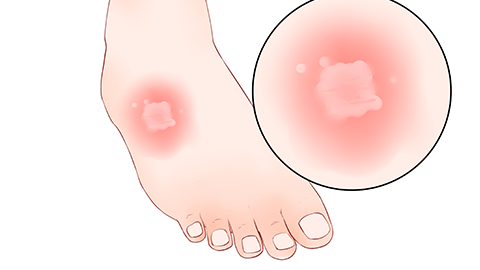How to treat a burn from hot oil?
Generally, in the case of an oil burn, you can handle it by rinsing with cold water, removing grease and clothing, disinfecting and bandaging, applying ointment, and seeking medical treatment. The details are as follows:

1. Rinsing with cold water: Immediately after an oil burn, the wound should be rinsed with running cold water. This effectively lowers the skin temperature, reduces further damage to deeper tissues from residual heat, and simultaneously alleviates pain. Take care that the water flow is not too strong to avoid breaking the skin.
2. Removing grease and clothing: After rinsing, carefully remove any residual grease and adhered clothing from the wound. For loosely attached clothing, use scissors to cut it away. Do not forcibly pull off clothing that is stuck to the skin, to avoid worsening skin damage.
3. Disinfection and bandaging: Disinfect the wound using povidone-iodine or normal saline to kill bacteria and prevent infection. Cover the wound with clean gauze. Avoid wrapping too tightly, as this may impair blood circulation and healing. Keep the gauze clean and dry, and replace it regularly.
4. Applying ointment: After disinfection, apply burn ointments such as moist burn ointment, burn cream, or erythromycin ointment under the guidance of a physician, to promote wound healing. Apply the ointment evenly over the wound surface without excessive accumulation.
5. Seeking medical treatment: If the burn covers a large area, is deep, or is accompanied by signs of infection such as redness and swelling or exudation, seek medical attention promptly. Treatment may include wound debridement, dressing changes, anti-infective therapy, and necessary surgical intervention.
During the treatment process, patients should keep the wound clean and dry, avoid contact with water, and reduce the risk of infection. Additionally, follow the physician's instructions for medication, and change dressings and medications on schedule.






